Weekend Diversion: Build your own Iron-rich star!
An amazingly fun and clever game that allows you to fuse elements in your own stellar simulation.
“Iron helps us play!” –The Simpsons
It was so much fun this week to talk about how the Sun really shines, where we shared the details of how, exactly, hydrogen gets turned into helium in the Sun, that I couldn’t help but think of the rest of the story. For this weekend, enjoy the sounds of Jeff Austin (and Chris Castino) as they go through the incomparable Flatiron Suite…
While I introduce you to an innovative, student-produced game: Fe[26]!

Created by undergraduate students Dimitar Dimitrov and Kevin O’Connor of Rensselaer Polytechnic Institute, this 1024/2048-style game is played by using the four arrow keys, which slide all the elements either to the left, right, top or bottom. If two elements collide that can fuse together (according to the rules of the game), they do, with priority given to the direction you just moved.
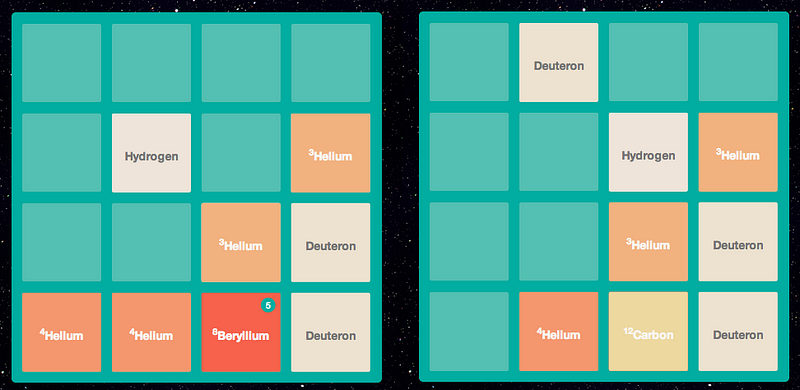
Some elements that you can make — such as beryllium-8, above — are unstable, and will decay after the number of moves indicated (they count down); only the heaviest decay product is left behind. Otherwise, victory would be impossible! But if you can, for example, get a third helium-4 (it took two to make beryllium-8) in there before it decays, you can make carbon! Note that if I had moved to the left instead of the right, I would have made a second beryllium-8 instead of a carbon!
Just like in real stars, you can gradually bump your way up to heavier elements by adding helium-4 to them. But — also like in real stars — that’s not always the way to go to get to your destination. For example, which of these two boards would you rather have?
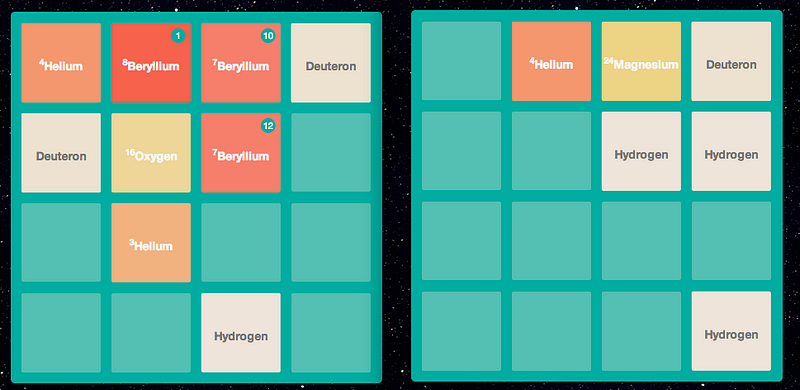
You might look on the left, with the useless, dead-end beryllium-7s (which will eventually decay to helium-4 in this game, not so different from real life, where they get blasted apart into helium-4 and helium-3) and no element higher than oxygen-16, and instinctively prefer the cleaner board on the right, with magnesium-24. But magnesium-24 is a dead-end in this game, unable to go any higher by adding anything to it!
Instead, the only way to get past magnesium-24 is to create and combine two oxygen-16s to jump you up to silicon-28!

This is, in fact, a process that almost happens in real stars (where carbon+oxygen fusion gets you to silicon-28), but only in the most massive O-and-B-class stars, and only in the last few hundred years of a star’s life. In a real star, two silicon atoms fuse together to get you to iron, but in this game, you can only keep adding helium to silicon to work your way up there!
Once you form your first iron atom, it will tell you that you won!
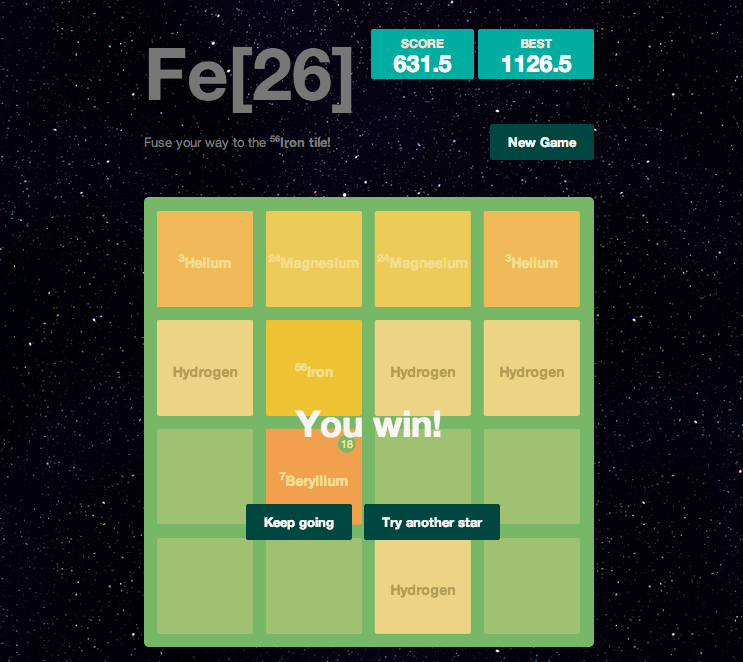
But you can keep playing to see how high a score you can get. The score isn’t as much a challenge to me as seeing how many iron atoms you can form; I’ve never gotten past two, but maybe I need to take more care to stop forming magnesium!
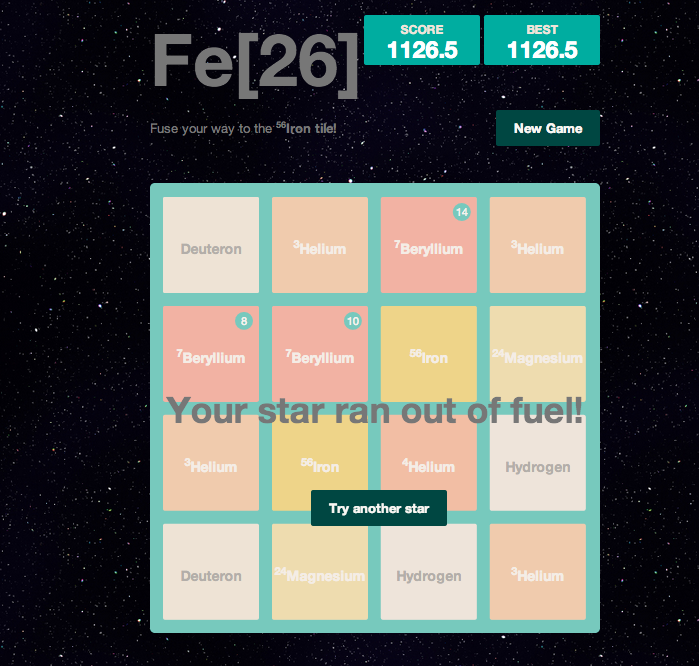
I still haven’t been able to form more than two irons in a single game, but it sure is fun to try. And don’t forget to look at the rules-of-the-game at the bottom of their page or you’ll regret it!
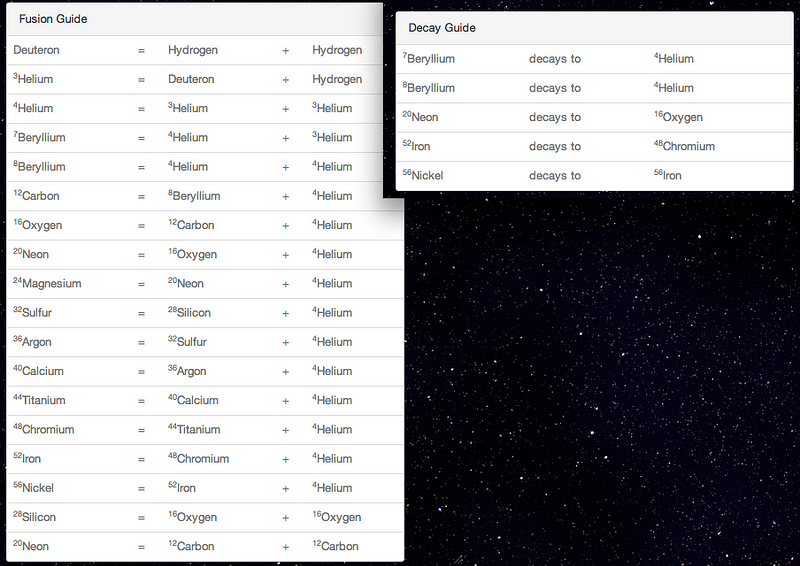
The physics of nuclear fusion is a rich and wonderful subject, but I’m so pleased to be able to share a fun and easy way to play with it. Check out and enjoy the game here (sorry, no embeds) — http://newbrict.github.io/Fe26/ — and a special thanks to Kam-Yung Soh for sharing this with me.
Enjoy, don’t forget to check out our Comments of the Week, and have a great rest-of-your weekend!
Have your say and weigh in at the Starts With A Bang forum on Scienceblogs!
Update: New high score! Three irons, plus 1340 points.
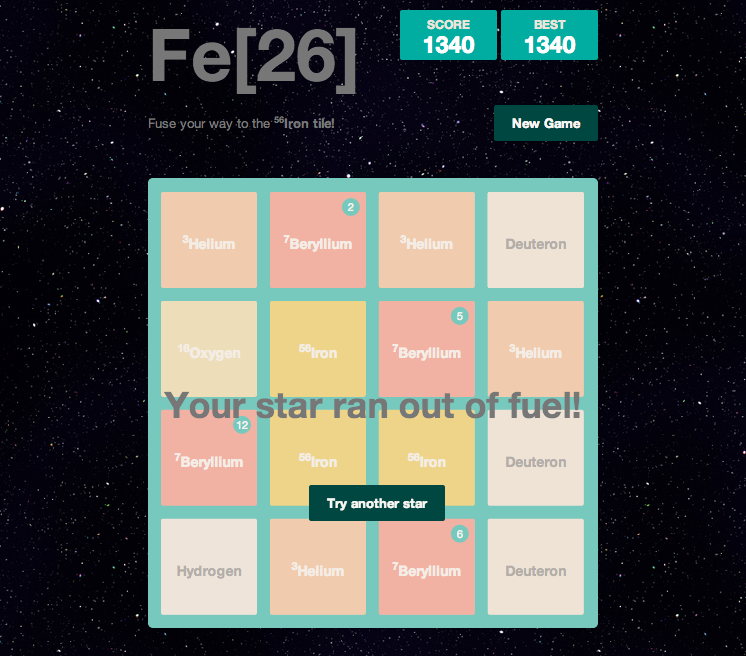
Can anyone beat that?





